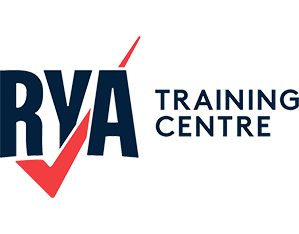RYA Advanced Powerboat Examination Syllabus
Advanced Powerboat Examination Syllabus
For students looking to commercially endore their advanced course certificate.
Preparation for sea
Preparation of vessel
Safety brief
Stowing and securing gear for coastal passages
Engine operations and routine checks, fuel systems, kill cord
Fuel system, bleeding, changing filters and impellers
Boat handling
Hull forms and their handling characteristics, propeller confirgurations
Knowledge of action to be taken in rough weather
Significance of tidal stream on sea conditions
Steering and power control through waves
Understanding and correct use of power trim and tabs
Towing, under open sea conditions and in confined areas
Strategy up and downwind and in heavy weather
Awareness of the effects of wind and tide when manoeuvring, including:
Steering to transits and in buoyed channels
Turning in a confined space
All berthing and un-berthing
Picking up and leaving a mooring buoy
Anchoring
Recovery of man overboard
Awareness of ground speed and ability to hold the boat on station
Responsibilities
Skippering the vessel with effective crew communication
Preparing the vessel for sea and for adverse weather
Tactics for heavy weather and restricted visibility
Emergency and distress situations
Customs procedures
Courtesy to other water users
Passage making and pilotage
Your chart work and theory knowledge should include:
Charts, navigational publications and sources of navigational information
Chart work, including position fixing and shaping course to allow for tide
Tidal heights and depths
Buoyage and visual aids to navigation
Instruments, inclusing compasses, logs, echo sounders, radio navigation aids and chart work instruments
Passage planning and navigational tactics
Importance of pre-plannig
High speed navigation, pre-planning and execute
Use of electronic navigation (GPS & Radar)
Pilotage techniques and plans for entry into or departure from harbour
Use of leading and clearing lines, transits and soundings as aids to pilotage
Navigational records
Limits of navigational accuracy and margins of safety
Lee shore dangers
You should be able to enter and depart from a charted port by day or night.
Your examiner will give you a pilotage exercise and ask you to explain your planning.
You will need to be aware of the problems of collision avoidance and how to determine your position by night.
Meteorology
You should be able to use weather and tidal information to predict likely sea conditions and make passage planning decisions.
Definition of terms incuding Beaufort Scale, and their significance to small craft.
Sources of weather forecasts
Weather systems and local weather effects
Interpretation of weather forecasts, barometric trends and visible phenomena
Ability to make passage planning decisions based on forecast information
Rules of the road
Application of the International Regulations for Preventing Collisions at Sea.
You should be able to identify power and sailing vessels by night. Identification of types of ship by night is not required, but you will need a knowledge of the lights of tugs and trawlers. Safety
Candidates will be expected to know what safety equipment should be carried on board the vessel, based either on the recommendations in RYA booklet C8, or the Codes of Practice for the Safety of Small Commercial Vessels.
In particular, candidates must know the responsibilities of a skipper in relation to:
Fire prevention and fighting
Hull damage / watertight integrity
Medical emergency
Towing and being towed
VHF emergency procedures
Explanation of helicopter rescue procedures
Use of flares
Man overboard
Sector search
Lifejackets
Life rafts


